
Touro Synagogue "It [Touro] is not only the oldest Synagogue in America but also one of the oldest symbols of liberty. No better tradition exists than the history of Touro Synagogue's great contribution to the goals of freedom and justice for all." Roger Williams was a crusader for religious tolerance and acceptance and his ideals spread strong throughout Rhode Island. The oldest synagogue in the country, Touro Synagogue, is in Newport, Rhode Island. The Touro Synagogue stands as not just a part of the American Jewish experience and community but as a mark of Roger Williams’s ideals and teachings. It is a symbol of religious freedom for all Americans. The Congregation dates back to 1658 and the synagogue itself was dedicated in 1762. The Touro Synagogue is affiliated with the National Park Service as a National Historic Site. The tour schedule may vary due to Jewish holidays, ceremonial occasions and special events so it is always a good idea to call first before you plan your visit. Also, unfortunately, the Synagogue is not wheelchair accessible and there are no public restrooms available on the site. Finally, tours are not offered on Saturdays or Jewish Holidays. Please visit the Touro Synagogue website (above) for a full list of operating hours.

Smith’s Castle Around 1637, Roger Williams came to Cocumscussoc (now Wickford), where he learned the Narragansett customs and language. He established a trading post on land bought from his friend, the great sachem Canonicus of the Narragansett tribe. Around 1637, Richard Smith, an original settler of Taunton in Plymouth Colony, also established a trading post in Cocumscussoc. According to Williams, Smith "Put up...the first English house...in Nahigonsik Countrey." It is thought to have been a grand house that was, possibly, fortified. Thus, the name Smith's Castle. Richard Smith purchased Williams's trading post in 1651. Smith continued to increase his holdings, and Cocumscussoc soon became a center of social, political, and religious activities. Smith died in 1666 leaving Cocumscussoc to his son, Richard Smith, Jr.
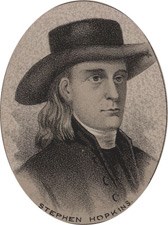
Governor Stephen Hopkins House Governor Stephen Hopkins was the Ten Times Governor of Rhode Island. He attended the first Continental Congress in 1774 and signed the Declaration of Independence in 1776. George Washington visited his home on two separate occasions, and he was a prominent statesmen and political figure who helped to make Rhode Island what it is today. The Stephen Hopkins House is owned by the State of Rhode Island and Providence Plantations and, since 1927, has been administered by the National Society of Colonial Dames of America. The Stephen Hopkins House is open Saturdays 10AM to 4PM, May through November and til 10PM on full lightings of WaterFire, or by appointment.

Brown University Brown University is part of the Ivy League and is one of the oldest Universities in the country. The school itself dates back to 1764. It was originally founded as the College of Rhode Island in Warren. The school had its first register of students in 1765. In 1770, the school moved to its present location on College Hill, overlooking the city of Providence. In 1804 in recognition of a gift from Nicolas Brown, the College of Rhode Island was renamed Brown University. In 1891, the first women were admitted to the college. Brown is considered one of the most prestigious Universities in the country. Please visit the Brown University web page (above) to view a list of operating hours for tours and visiting.
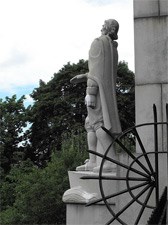
Roger Williams Monument, Prospect Park In 1860, Stephen Randall, a Roger Williams descendant, dug up what was thought to be the remains of Williams. Roger Williams’s grave never contained a marker or monument signifying his resting place. Concerned citizens joined Stephen Randall and formed the Roger Williams Monument Association in April 1860. Their goal was to raise enough funds in order to create an appropriate monument to Roger Williams, who gave so much to this state and this country. Throughout the years, they slowly raised money, but as the association’s members grew older and many passed away, the interest in the project seemed to decrease. Stephen Randall, before he died, left a thousand dollars to be used for the monument in addition to the association’s funds and a deed detailing the ideal location and what type of monument. Due to the details of Randall’s deed and the sporadic interest of the state’s people, it would take over 300 years after Roger founded Providence for a monument to be erected in his honor. The monument was finally built on Prospect Terrace and was formally dedicated on June 29, 1939. This park is located on Congdon Street in Providence’s beautiful College Hill Historic District and is not only the final resting place of Rhode Island’s founder but offers an overlook of the city with a spectacular view of the state capital. The monument is symbolic of a man that fought his entire life for religious freedom and “Liberty of Conscience”. His hand is stretched out blessing the city and its people.
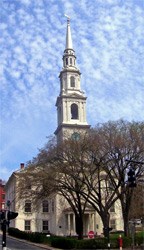
First Baptist Meeting House The Baptist congregation in Providence is the oldest congregation in America although the Baptist Meeting House itself dates back to 1775 (there would be no meeting place until 1700 and, by 1775, this church was the congregation’s third). In 1636 when Roger Williams founded Providence he gathered men and women in his home a few times a week to worship. He continued to do this for about two years, and then in 1638 the small congregation became the First Baptist Church in America. Shortly after, Williams became disillusioned by the congregation, the very one he helped to create. He believed all of the churche’s virtues and practices became invalid after 385 A.D. when Roman Emperor Theodosius made Christianity the state religion of the empire. In 1639, he left the congregation but still believed that the church he helped to create was based on scriptures and held that belief until his death.
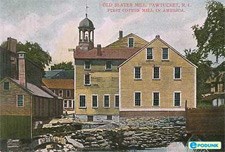
Old Slater Mill & Blackstone River Valley NHP It was at Old Slater Mill along the Blackstone River in Pawtucket, Rhode Island that Samuel Slater began the American Industrial Revolution with the construction of the first successful textile mill in 1793. Moses Brown had been trying to bring cotton manufacturing to Rhode Island since 1787 but could not spin the cotton strong enough to wrap a loom. Moses Brown needed help, and Samuel Slater did not like his job in New York, so a perfect match was formed. Moses had the money to fund the mill and Slater had the innovation. What Slater did was develop a sturdy and reliable mill. Samuel Slater had the sense to create technology that worked with the surrounding area. He was clever in that he created a system where he would move entire families in providing work for everyone. Without Samuel Slater’s genius, Brown’s mill would have definitely failed. Visitors to Old Slater Mill are surrounded by vintage textile machinery bathed in the light of large windows and receive information about the site from National Park Ranger. The mill is located in the Blackstone River Valley NHP.
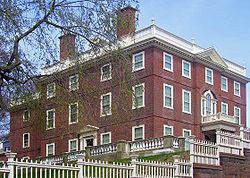
John Brown House Museum52 Power Street. 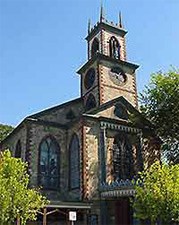
Cathedral of Saint John (Episcopal)
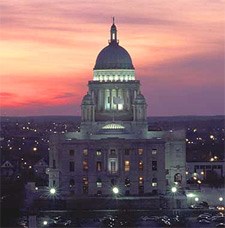
Rhode Island Statehouse
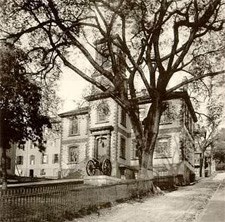
Rhode Island State House (The Old State House)
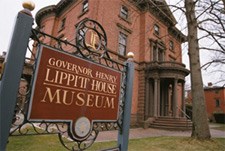
957 North Main Street Providence, RI 02904 401.272.5101 Lippitt House Museum Website Henry Lippitt was the Governor of Rhode Island from 1875-1877. He built his magnificient mansion in the grand style of the day, as a testament of his family’s taste and ambition. Built at 199 Hope Street in Providence for Lippitt, a textile merchant, his wife Mary Ann Balch Lippitt and their six children, the house was completed in 1865 and occupied by several generations of the Lippitt family for 114 years. Over the years, the family made only a few changes respecting the historic integrity of their ancestor's legacy. The house was designated a National Historic Landmark in 1976 and is an exceptional testament to local craftsman of the time. The only outside decorating firm hired to work on the house was Pottier and Stymus, a design firm from New York hired at the beginning of their career. The majority of the Lippitt furnishings are still in the house. |
Last updated: August 18, 2021
